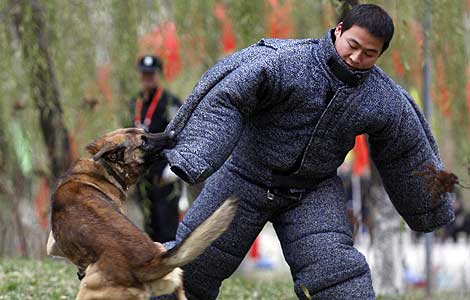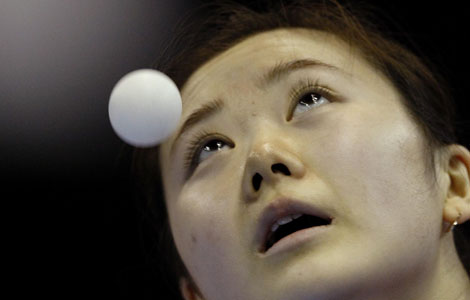Caught up in the jade craze
Updated: 2011-11-30 07:21
By Wei Tian (China Daily)
|
|||||||||
Off the market
"Top-quality Hetian jade is always bought directly by collectors from Beijing or Shanghai, or goes into the hands of jade-carving masters in Yangzhou," Wang said. "Only the next-best pieces are carved locally and for us local dealers."
But even when the second-best jade arrives at one of Wang's three fancy stores in Urumqi, a pebble the size of a 1 yuan coin comes with at least a five-figure price.
"Believe it or not, very few of them are now negotiable in price. People who really want to buy top-grade pieces do not care about the prices at all," Wang said. "You just don't know how rich some people are."
For many dealers like Wang, the real problem is to provide quality products to meet the demand. Very little good jade returns to circulation once sold, because people keep their collections off the market while -prices are rising.
"Earlier this year, there was a businessman from Wenzhou who brought 30 million yuan with him, hoping he could buy some masterpieces, but he returned disappointed," Wang said.
Wang has even contacted old customers to try to buy back their pieces, usually offering a 20 percent premium on the original price, but has found few takers.
That's understandable, given that even showing off your jade has become risky.
"The rules are, if someone is holding your jade and intends to appropriate it for himself, he can ask you to name a price and then pay for it," said Wei Dongyun, an experienced jade collector.
"It always happens at a dinner table with your friends, colleagues or a superior. You can hardly name a decent price to these people for fear of losing mianzi (face), but have to let it go," Wei said.
"So you'd better keep it low key when you get a masterpiece unless you're ready to make it a gift," he said.
On other occasions, Hetian jade is purchased for a purpose. "Our products were mostly bought by businessmen as a gift for their friends or business partners," Tong Xiaoyan said.
"No ordinary people would buy a jade article that costs a year's salary."
Tong is a saleswoman at Tianshan Department Store in one of Urumqi's most luxurious shopping malls. She used to work at a counter that sells diamonds, but applied to move to the jade counter "simply because the Hetian jade is much more expensive, and is a good way to make more commission".
"The genuine Hetian jades are already unaffordable for regular customers," she said. "If you have bought a nice-looking piece for just several hundred yuan, there is a great chance that you were cheated" - that the jade was imported.
Filling the low end
Xinjiang, as a popular tourist destination, attracts millions of people who would like to take home several jade articles as souvenirs. But their budgets, maybe just several thousand yuan, are trifling to the sellers.
A gap between the surging prices of genuine Hetian jade and growing demand at the low end has boosted imports from overseas.
"The volume of imported jade is enough to make every Chinese a jade wearer," said Li Yanjun, deputy head of art appraisal at the Ministry of Culture. "The majority of imports are from Russia or South Korea."
Total jade production in Hetian five years ago was about 10 tons. Jade imports from Russia alone exceeded 500 tons.
"Jade does not share the same cultural identity abroad as it does in our country," Li said. "The majority of their production is for export to China."
A growing supply from abroad will eventually bring down prices in the low-end market, Li said. Korean jade sells for just 800 yuan a kilo.











